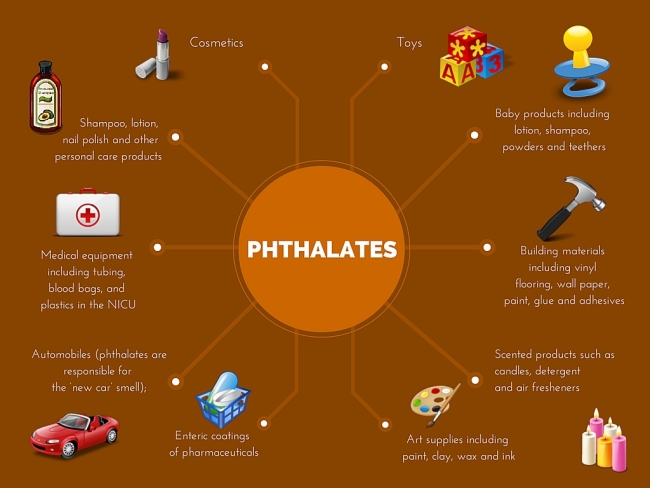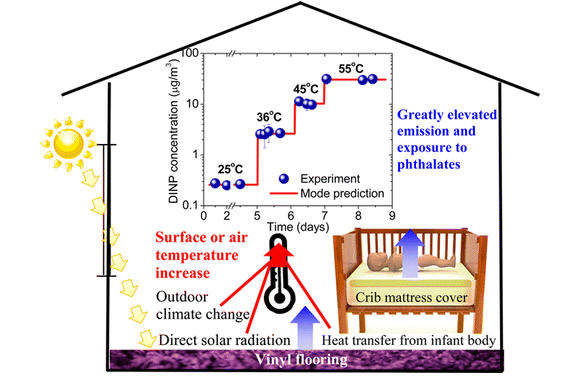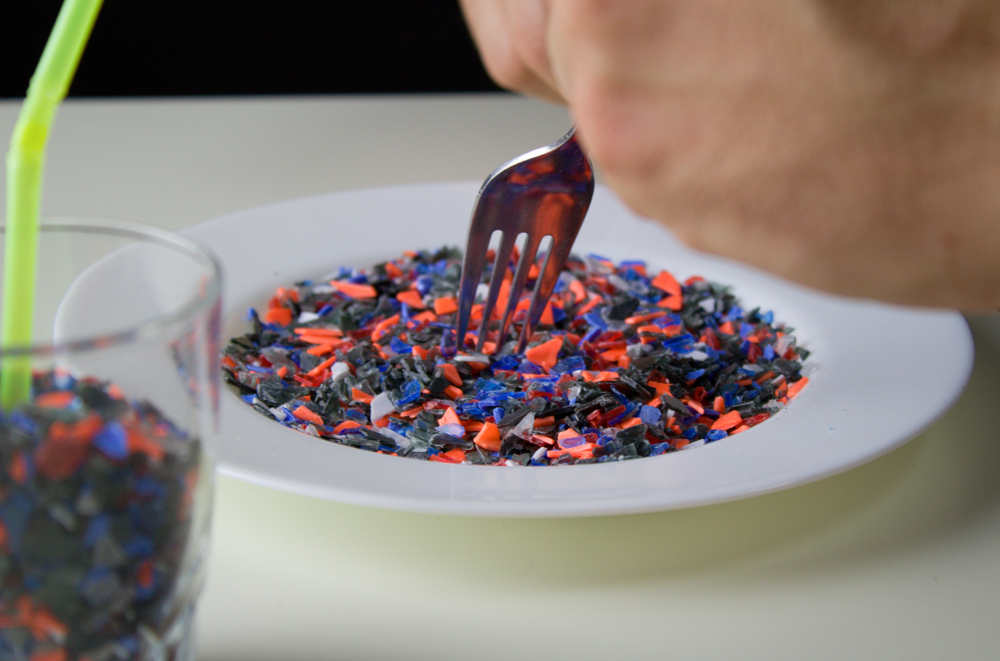Phthalates are a group of chemicals commonly used in the production of plastics, including vinyl. They are often added to products to make them more flexible and durable. However, concerns have been raised about their potential impact on human health, particularly when they leach out of products like vinyl mattress covers.1. What are phthalates?
Vinyl is a popular material for mattress covers because it is waterproof, easy to clean, and affordable. However, vinyl on its own is not very flexible, so phthalates are often added to make it more pliable. This allows the mattress cover to fit snugly over the mattress and provide a tighter seal against liquids and other materials.2. Why are phthalates used in vinyl mattress covers?
Phthalates are not chemically bound to the vinyl in mattress covers, which means they can easily leach out over time. This can happen through physical contact, such as when someone lays or sits on the mattress cover, or through exposure to heat and moisture. As the phthalates leach out, they can potentially come into contact with the skin and be inhaled, raising concerns about their potential health effects.3. How do phthalates leach out of vinyl mattress covers?
Studies have shown that phthalates can disrupt the endocrine system and have been linked to a variety of health issues, including reproductive problems, developmental delays, and respiratory conditions. They have also been classified as possible carcinogens by the International Agency for Research on Cancer. While the extent of the health risks is still being studied, there is growing concern about the potential impact of phthalates on human health.4. What are the potential health risks of phthalates?
No, not all vinyl mattress covers contain phthalates. However, it can be difficult to determine which ones do and which ones don't. This is because manufacturers are not required to disclose whether or not their products contain phthalates. If you are concerned about phthalates, it is best to look for mattress covers that are specifically labeled as "phthalate-free."5. Are all vinyl mattress covers made with phthalates?
Unfortunately, there is no clear-cut way to determine if phthalates are leaching out of a vinyl mattress cover without laboratory testing. However, there are some signs that could indicate a potential issue, such as a strong chemical smell or discoloration of the vinyl. If you notice these signs or have concerns, it may be best to replace your vinyl mattress cover with a phthalate-free option.6. How can you tell if phthalates are leaching out of your vinyl mattress cover?
If you are looking for a non-toxic alternative to vinyl mattress covers, there are several options available. Some popular choices include organic cotton, bamboo, and wool mattress covers. These materials are all naturally waterproof and do not contain phthalates or other potentially harmful chemicals.7. What are some alternatives to vinyl mattress covers?
If you are worried that your vinyl mattress cover may contain phthalates, the best course of action is to replace it with a safer alternative. This will not only eliminate the potential risk of exposure to phthalates but also provide you with peace of mind and a healthier sleep environment.8. What should you do if you suspect your vinyl mattress cover contains phthalates?
Phthalates are not just used in vinyl mattress covers; they can also be found in a wide range of other products, including plastic toys, shower curtains, and even some cosmetics. To reduce your exposure to phthalates, it is important to read labels and choose products that are labeled as phthalate-free. You can also look for products made from alternative materials, such as silicone or natural rubber.9. How can you avoid phthalates in other products?
While vinyl mattress covers are a popular choice for their waterproofing and affordability, the potential health risks of phthalates should not be overlooked. If you are concerned about phthalates leaching out of your vinyl mattress cover, it is best to opt for a phthalate-free alternative made from natural and non-toxic materials. By making this small change, you can create a healthier and safer sleep environment for yourself and your loved ones.10. In conclusion
The Potential Dangers of Phthalates in Vinyl Mattress Covers

Understanding Phthalates and Their Effects
 Phthalates, also known as phthalate esters, are a group of chemicals commonly used in the production of plastics. They are often added to vinyl or PVC materials to make them more flexible and durable. However, these chemicals have been linked to various health risks, particularly when used in products that come in close contact with our bodies, such as vinyl mattress covers.
Phthalates, also known as phthalate esters, are a group of chemicals commonly used in the production of plastics. They are often added to vinyl or PVC materials to make them more flexible and durable. However, these chemicals have been linked to various health risks, particularly when used in products that come in close contact with our bodies, such as vinyl mattress covers.
The Concerns Surrounding Phthalates in Vinyl Mattress Covers
 One of the main concerns surrounding phthalates in vinyl mattress covers is the potential for them to
leach out
into the air and onto our skin. This is known as off-gassing, and it occurs when the chemicals used in the production of the cover break down and release into the surrounding environment. This off-gassing can be especially concerning for those who are sensitive to chemicals or have respiratory issues, as it can cause irritation and even exacerbate existing conditions.
Another concern is the
long-term effects
of exposure to phthalates. Studies have shown that these chemicals can disrupt the endocrine system and have been linked to hormone imbalances, reproductive issues, and even certain types of cancer. And although vinyl mattress covers are meant to protect against spills and stains, they can actually trap moisture and create the perfect environment for mold and bacteria growth, which can also have negative effects on our health.
One of the main concerns surrounding phthalates in vinyl mattress covers is the potential for them to
leach out
into the air and onto our skin. This is known as off-gassing, and it occurs when the chemicals used in the production of the cover break down and release into the surrounding environment. This off-gassing can be especially concerning for those who are sensitive to chemicals or have respiratory issues, as it can cause irritation and even exacerbate existing conditions.
Another concern is the
long-term effects
of exposure to phthalates. Studies have shown that these chemicals can disrupt the endocrine system and have been linked to hormone imbalances, reproductive issues, and even certain types of cancer. And although vinyl mattress covers are meant to protect against spills and stains, they can actually trap moisture and create the perfect environment for mold and bacteria growth, which can also have negative effects on our health.
How to Minimize Exposure to Phthalates
 While there is no way to completely eliminate the presence of phthalates in vinyl mattress covers, there are steps you can take to
minimize your exposure
. Look for vinyl covers that are labeled as
phthalate-free
, or consider using alternative materials such as organic cotton or bamboo covers. Additionally, make sure to properly ventilate your bedroom and wash your cover regularly to reduce the build-up of chemicals.
While there is no way to completely eliminate the presence of phthalates in vinyl mattress covers, there are steps you can take to
minimize your exposure
. Look for vinyl covers that are labeled as
phthalate-free
, or consider using alternative materials such as organic cotton or bamboo covers. Additionally, make sure to properly ventilate your bedroom and wash your cover regularly to reduce the build-up of chemicals.
The Importance of Choosing Safer Materials for Your Home
 The potential dangers of phthalates in vinyl mattress covers highlight the importance of being mindful of the materials we bring into our homes. As consumers, we have the power to choose safer, more eco-friendly options that do not compromise our health and well-being. By educating ourselves and making informed decisions, we can create a healthier environment for ourselves and our loved ones.
The potential dangers of phthalates in vinyl mattress covers highlight the importance of being mindful of the materials we bring into our homes. As consumers, we have the power to choose safer, more eco-friendly options that do not compromise our health and well-being. By educating ourselves and making informed decisions, we can create a healthier environment for ourselves and our loved ones.































:max_bytes(150000):strip_icc()/mattress-topper-queen-tout-2000-875e0a1bc6dc470c9cf61777d82ebdb6.jpg)


